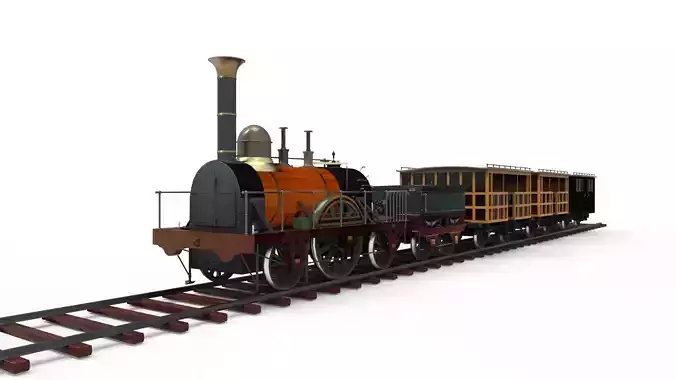1/6
A steam locomotive is a locomotive that provides the force to move itself and other vehicles by means of the expansion of steam.[1]: 80 It is fuelled by burning combustible material (usually coal, oil or, rarely, wood) to heat water in the locomotive's boiler to the point where it becomes gaseous and its volume increases 1,700 times. Functionally, it is a steam engine on wheels.
In most locomotives, the steam is admitted alternately to each end of its cylinders in which pistons are mechanically connected to the locomotive's main wheels. Fuel and water supplies are usually carried with the locomotive, either on the locomotive itself or in a tender coupled to it. Variations in this general design include electrically-powered boilers, turbines in place of pistons, and using steam generated externally.
Steam locomotives were first developed in the United Kingdom during the early 19th century and used for railway transport until the middle of the 20th century. Richard Trevithick built the first steam locomotive known to have hauled a load over a distance at Pen-y-darren in 1804, although he produced an earlier locomotive for trial at Coalbrookdale in 1802.[2] Salamanca, built in 1812 by Matthew Murray for the Middleton Railway, was the first commercially successful steam locomotive.[3] Locomotion No. 1, built by George Stephenson and his son Robert’s company Robert Stephenson and Company, was the first steam locomotive to haul passengers on a public railway, the Stockton and Darlington Railway, in 1825. Rapid development ensued; in 1830 George Stephenson opened the first public inter-city railway, the Liverpool and Manchester Railway, after the success of Rocket at the 1829 Rainhill Trials had proved that steam locomotives could perform such duties. Robert Stephenson and Company was the pre-eminent builder of steam locomotives in the first decades of steam for railways in the United Kingdom, the United States, and much of Europe.[4]
REVIEWS & COMMENTS
accuracy, and usability.






